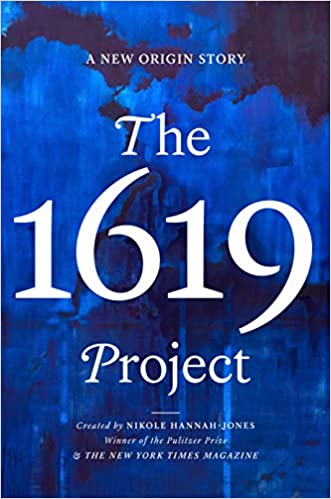 The 1619 Project by Nikole Hannah-Jones, ed. (2021 non-fiction)
The 1619 Project by Nikole Hannah-Jones, ed. (2021 non-fiction)
Slavery did not begin in 1619. But aspects of American enslavement of Africans were unique. It was hereditary. The child of a slave was a slave. English common law derived a child’s status from the father, but in this case, the child’s status derived from the mother, using the law that applied to livestock: who owns the cow, owns the calf. As Thomas Jefferson put it, an enslaved woman who birthed a living child every two years was more valuable than an enslaved man who, once he could no longer work, left nothing behind.
The American slavery system first codified the notion of “blackness” and “whiteness”. At first, colonials drew no distinction between (white) indentured servants and (African) slaves but when a revolt against intolerable conditions was crushed, sharp lines were drawn between “races” including concomitant racial mythology.
The Fourteenth Amendment eliminated slavery but with the critical clause except as punishment for crimes. With the defeat of Reconstruction, Southern states passed laws that made a crime for Black people to do such things as loiter, be unemployed, actual or perceived rudeness to a white person, etc.
It is impossible to summarize such a comprehensive history in a few paragraphs; I just recommend reading the book. In the final chapter, Justice, Hannah-Jones writes “We cannot change the hypocrisy upon which we were founded. We cannot change all the times in the past when this nation had the opportunity to do the right thing and chose to return to its bases inclinations. We cannot make up for all of the lives lost and dreams snatched, for all the suffering endured. But we can atone for it. We can acknowledge the crime. And we can do something to set things right. None of us can be held responsible for the wrongs of our ancestors. But if today we choose not to do the right and necessary thing, that burden we own.”
Reviewed by Carol Sholin

